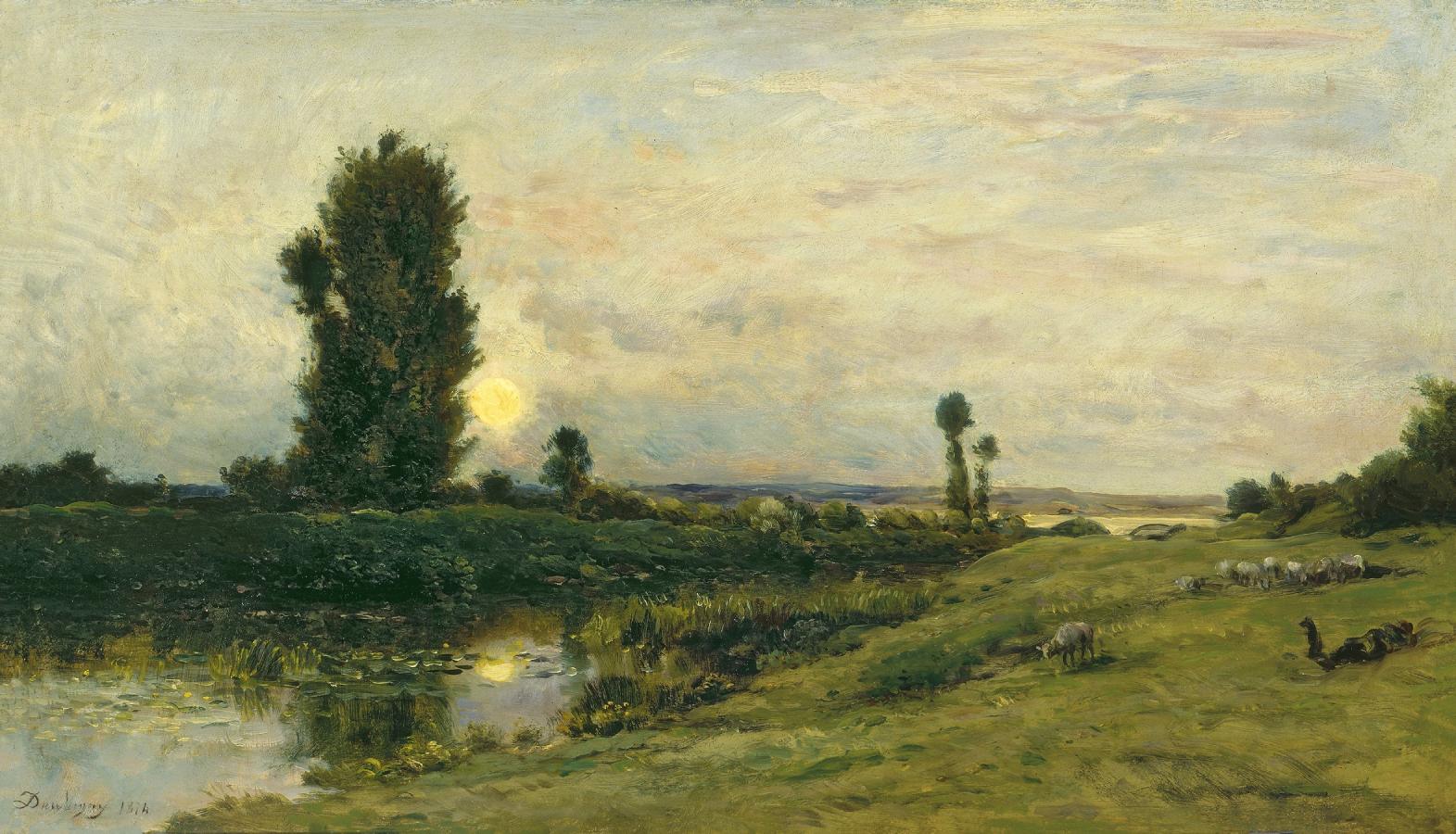Daubigny, Charles-François (1817-1878)
Lever de lune sur les bords de l’Oise (Moonrise on the Banks of the River Oise)
1874
Oil on panel, 38.5 x 67.2 cm
Museo Thyssen-Bornemisza, Madrid
©Carmen Thyssen Collection
The river Oise was one of Daubigny‘s favourite subjects. He set up a studio in Auvers-sur-Oise, travelling up and down the river on his “Le botin”, with his son and pupil Karl, every spring from 1857 onwards. Corot joined him regularly from 1860.
Théophile Gautier wrote in his notebook relating to the 1861 Salon: “It is such a shame that this landscape painter, whose feelings are so true, so precise and so natural, should feel satisfied with an impression and ignore details to such a degree.” Daubigny depicted water in such a natural and subtle way, that no other artist equalled him during his time, or thereafter.
Auvers became the artistic melting-pot for some highly prestigious painters: after Daubigny, both Van Gogh and Cézanne, under the iron rule of Dr. Gachet, visited the place. The village was his home base; “Daubigny was probably the first artist to paint entirely from nature his large works. The one representing Villerville-sur-Mer, exhibited at the 1864 Salon was, among others, completely painted out of doors. He waited for the favourable moment and rushed to his work as soon as the weather seemed to correspond to the impression he wished to convey in the painting.”
In 1874 he was awarded the order of the Legion of Honour, which confirmed him as an official painter. Besides this high honour, he tirelessly defended Claude Monet before his official dealer, Durand-Ruel, to the extent that he imposed on him a policy whereby, for every two paintings Daubigny delivered to him, the dealer would buy one work from Monet. The year 1874 also marked the birth of Impressionism, with Monet‘s painting Impression, Sunrise, shown at the first Impressionist exhibition, organised in Paris by the famous photographer Nadar in April and May.
Monet followed at a distance Daubigny‘s artistic career. Impression, Sunrise, dated in 1874, was painted after Daubigny‘s work Villerville, Sunset of 1873, exhibited in Vienna that same year. In addition, Daubigny presented at the 1874 Salon a painting entitled The Countryside in June, depicting some poppies, condemned by the critics and which even his friend Coro considered too bright.
Monet took up again this subject in Poppies, dated in 1882, one of the artist’s most famous works.
From 1830 onward, painting, apart from the The Hague School, with artists such as Mesdag, or English art, represented by Constable and Turner, was reduced to genre painting. The Barbizon school and its followers were a novelty: by working from nature, the studio stopped being the crucial place for work and became a practical accessory.
For Daubigny, the representation of animals -ducks, storks, cows, lambs and even turkeys- indicates a more natural presence than that of human beings.
Daubigny, like some 19th-century writers -among which Baudelaire– marked a transition between classicism and modernism. The architecture remained, but a new spirit infused suppleness in the technique, enabling it to convey emotions which could not have been revealed before 1830, the period dominated by neo-classicism. “It is impossible to mistake the time of the day when Mr. Daubigny paints. He is the painter of a moment, of an impression.” Painting entered a new era.
Anne Burdin-Hellebranth (T-B)
